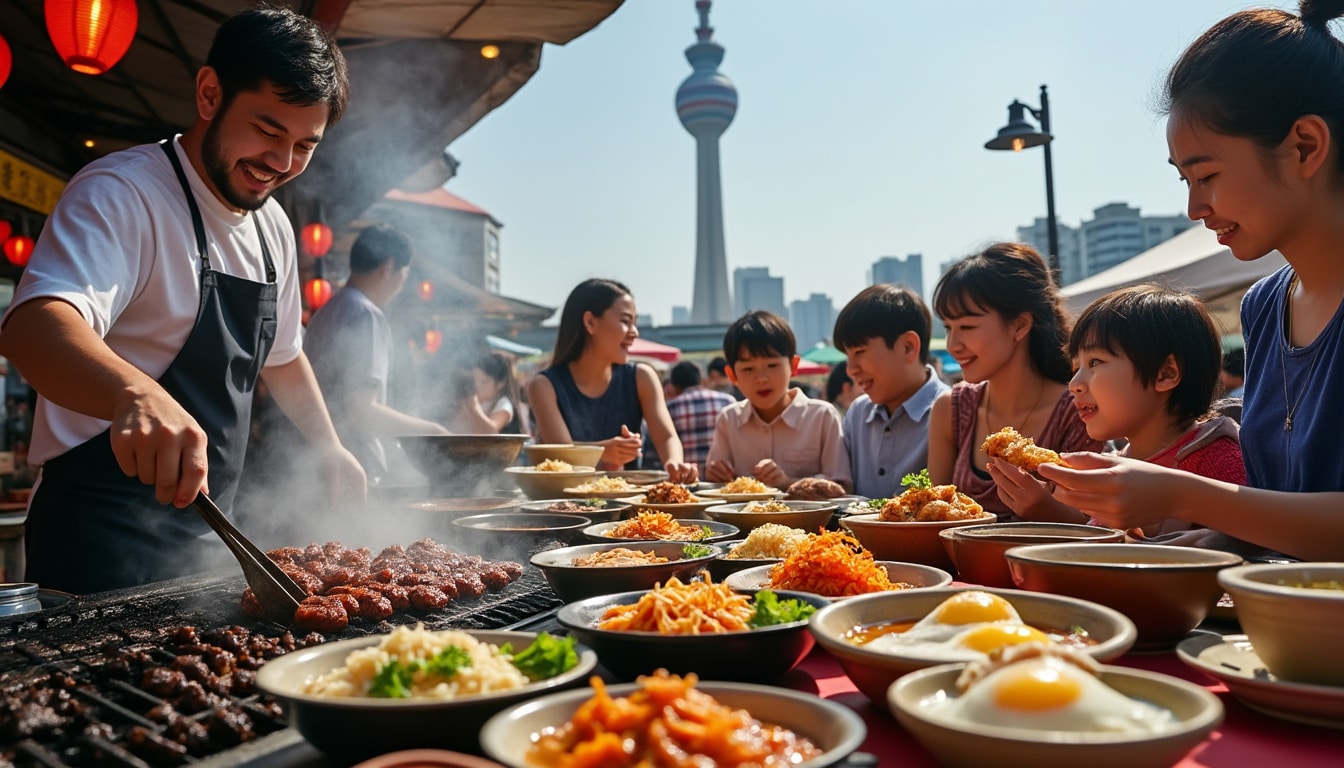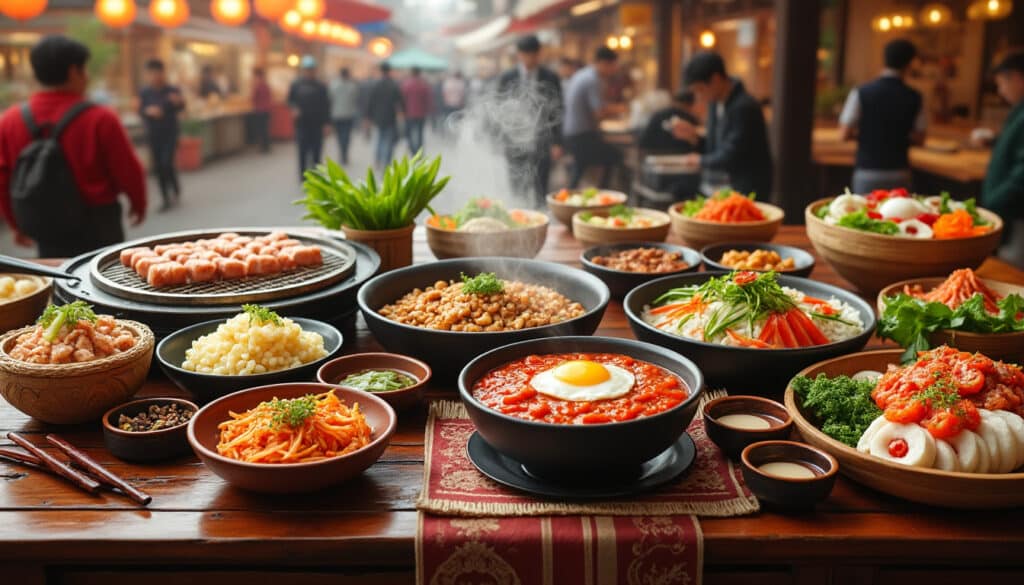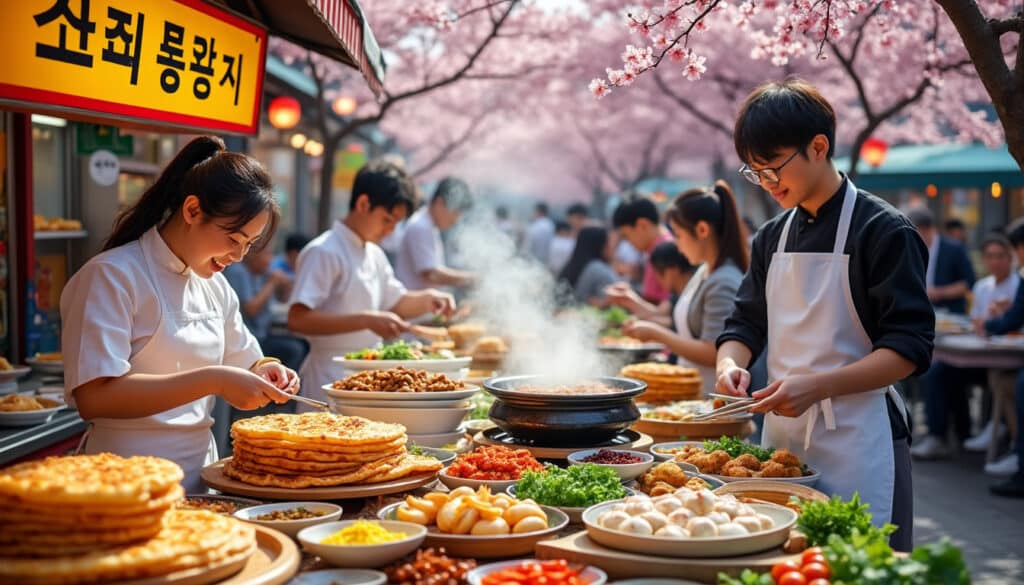Seoul, a bustling metropolis of culture and gastronomy, offers a captivating glimpse into the culinary heartbeat of South Korea. Meal times here aren’t just about eating; they represent a deep-seated cultural practice, emphasizing family, tradition, and community. As visitors delve into this rhythmic culinary landscape, they’ll find each meal not only satisfies the palate but also enriches the soul. In this exploration of Seoul’s meal times, discover the vibrant flavors, traditions, and social dynamics that make dining in South Korea a truly unique experience.
Understanding Korean Breakfast Traditions in Seoul
In Seoul, breakfast serves as a fundamental start to the day, deeply rooted in tradition and cultural significance. Typically falling between 7:00 am and 9:00 am, breakfast in Korea diverges from the Western concept of light morning meals. Instead, it is often a hearty feast, comprising rice, soup or stew, side dishes known as banchan, and the iconic fermented staple, kimchi.
While modern Seoulites might on occasion opt for a quick pastry or a coffee, traditional Korean breakfast remains a comforting norm. The cultural emphasis on breakfast is linked to the belief that starting the day with a robust meal ensures good health and energy. For students and workers who require mental acuity and physical stamina, this morning ritual serves as fuel for the challenges ahead.
The breakfast table often features dishes like Gukbap, a warm and nourishing soup with rice cooked in meat or seafood broth. Another common morning delight is Bibimbap, a mixed rice dish with vegetables, meat, and a fried egg on top, seasoned with spicy gochujang. This vibrant dish not only awakens the senses but also provides a balanced diet.
Amidst the busy routine of Seoul’s residents, breakfast still allows space for bonding. Families might gather around the table, sharing stories and plans for the day over this communal meal. This not only strengthens relationships but also honors age-old traditions, where meals are a symbol of togetherness and care.
- 🍚 Typical Breakfast Menu: Rice, soup (such as Gukbap), Banchan (side dishes), Kimchi, and occasionally fish or egg dishes.
- ⏰ Meal Time: Between 7 AM and 9 AM.
- 💡 Cultural Insight: Breakfast is considered the most important meal to commence the day with energy and balance.
As an international visitor, adapting to a Korean-style breakfast in Seoul provides a unique opportunity to embrace the local culture and health benefits inherent in their traditional morning routines. By adopting these practices, one gains not only nourishment but a richer understanding of Korean lifestyle values.
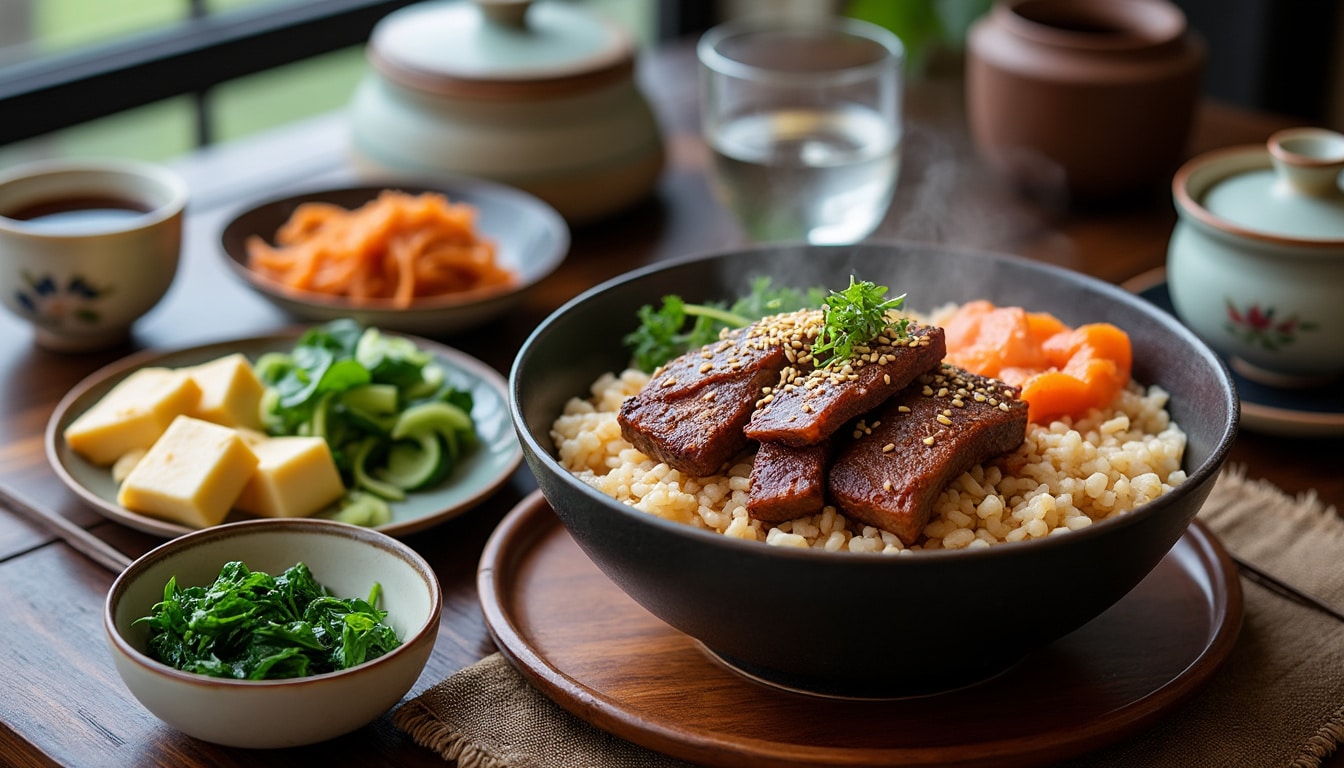
The Intricacies of Lunch: Socializing and Sustenance
Lunch in Seoul is more than just a midday meal; it’s an integral social experience marked by a culinary celebration of flavors and textures. Typically taking place between 12:00 pm and 1:00 pm, lunch is considered the most substantial meal of the day for many Koreans.
In bustling Seoul, lunch is often shared among co-workers, fostering an environment where relationships are nurtured and collaboration is encouraged. This communal meal usually includes rice, a variety of side dishes (banchan), a hearty soup or stew (Jjigae), and the ever-present Kimchi.
Popular lunchtime dishes include Bulgogi, marinated beef grilled to perfection, typically served with rice and lettuce leaves for wrapping. Another lunchtime staple is Jjajangmyeon, a noodle dish featuring a rich black bean sauce, which is particularly favored for its comforting and fulfilling qualities.
Seoul’s bustling districts are home to numerous lunch spots ranging from traditional eateries to modern fusion cafes. Each venue offers a unique taste of Korean hospitality and culinary diversity. The affordability and variety of lunch options make it easy for workers and tourists alike to enjoy a satisfying meal during the afternoon break.
- 🥢 Common Lunch Dishes: Bulgogi, Jjajangmyeon, assorted Banchan, and Kimchi.
- ⏰ Meal Time: Between 12 PM and 1 PM.
- 🗣️ Social Aspect: An opportunity to connect with co-workers and strengthen professional relationships.
Whether you are a local or a visitor, participating in a Korean lunch experience is not just about satisfying hunger, but an invitation to engage with Seoul’s vibrant culture and culinary traditions. It’s a chance to bond with others over flavorful food, sharing stories and laughter, making the meal an unforgettable part of your day.
Dinner Time in Seoul: The Heart of Family and Friends
Dinner in Seoul holds a special place as the time to unwind and reconnect with family and friends after a busy day. Typically held between 6:00 pm and 8:00 pm, dinner is not only about satiating hunger but also about sharing experiences, emotions, and strengthening familial bonds.
This evening meal often mirrors the content of lunch, with rice, myriad banchan, and a selection of soups or stews like Sundubu-jjigae, a comforting spicy tofu stew. However, dinner more frequently includes interactive and communal foods such as Samgyeopsal (grilled pork belly), adding a playful and engaging element to the meal. Diners grill the meat at the table, wrapping it in lettuce with rice and Kimchi, often accompanied by a variety of dipping sauces.
The interactive nature of a Korean dinner fosters a warm, engaging atmosphere. Traditional dining etiquette plays a role here, where individuals might wait for the eldest or host to begin before eating. This practice highlights the respect embedded in Korean culture, especially regarding mealtime.
As Seoul evolves into a global hub, its dinner culture reflects both tradition and modernization, catering to a diverse audience with vegan and international options appearing in many restaurants. Still, the essential value of gathering at the dinner table remains unchanged.
| Time | Common Dishes | Social Elements |
|---|---|---|
| 6 PM – 8 PM | Samgyeopsal, Sundubu-jjigae, Kimchi, Banchan | Family Gatherings |
Embrace the dinner traditions in Seoul, where each meal nourishes not just the body but the soul, fortifying bonds and celebrating life’s joys and challenges around a common table.
The Unwind: Late-night Snacks in Seoul
As night falls over Seoul, the city transforms, buzzing with energy and tantalizing aromas from street vendors and eateries luring night owls with comforting late-night snacks, known locally as “Yasik”. This culinary tradition not only satisfies a post-dinner craving but also fuels the vibrant nightlife that Seoul so famously champions.
One cannot mention late-night eating in Korea without acknowledging the beloved Soju accompaniments. A popular choice is crunchy fried chicken or the spicy kick of Tteokbokki, a fiery rice cake dish that provides a post-clubbing energy boost. Another favorite is Kimbap, resembling sushi, but with its unique Korean twist, filled with pickled vegetables, eggs, and sometimes ham or beef.
Night markets and bustling streets in districts like Hongdae and Myeongdong come alive, offering a smorgasbord of street food delights. Here, locals and travelers alike can indulge in flavors that range from sweet to spicy, from savory to tangy, providing a suitable end to a lively day.
- 🌙 Popular Late-night Foods: Fried chicken, Tteokbokki, Kimbap, and an assortment of street snacks.
- ⏰ Typical Time: Post 9 PM.
- 🎉 Social Importance: Complements Seoul’s vibrant nightlife scene.
Experience the conviviality of Seoul’s nightlife through its late-night eats, where food is much more than sustenance; it’s a party on your palate and the perfect companion to a city that never sleeps.
Special Occasion Feasts and Traditional Times
Korean culinary culture extensively celebrates its heritage through food, especially during special occasions and holidays. One of the most prominent times is Chuseok, akin to a Korean Thanksgiving, where families gather and feasts abound. Traditional dishes like Songpyeon (rice cakes) reflect the harvest’s abundance and the joy of togetherness.
Such occasions highlight dishes that are often reserved for celebrations or symbolize specific festivity spirits. Another example includes the Lunar New Year, where Tteokguk (rice cake soup) is traditionally consumed. Eating this soup symbolizes the gain of a year in one’s age, embodying renewal and hope for prosperity.
Festivals and personal celebrations like weddings or significant birthdays also witness lavish meals showcasing Seoul’s gastronomic flair with both traditional and modern dishes. Delicious creations, including Japchae (stir-fried glass noodles) or Galbi-jjim (braised short ribs), are presented in lavish spreads.
| Event | Special Dishes | Symbolism |
|---|---|---|
| Chuseok | Songpyeon, Japchae | Gratitude & Harvest |
| Lunar New Year | Tteokguk, Galbi-jjim | Renewal & Prosperity |
Engaging with Korea’s special occasions through these meals offers a deeper dive into its vibrant traditions and the central role of food in social and familial harmony. As you partake in these joyous feasts in Seoul, you join a rich tapestry of Korean cultural history and shared love of food.
FAQs
- 🤔 What is the typical breakfast time in Seoul?
Most Koreans have breakfast between 7:00 AM and 9:00 AM, featuring dishes like rice, soup, banchan, and kimchi. - 🥢 What are common side dishes served during meals?
Banchan, or side dishes, often include kimchi, pickled vegetables, and small portions of vegetables or fish. - 🍽️ When do Koreans typically have dinner?
Dinner usually occurs between 6:00 PM and 8:00 PM, featuring meals similar to lunch but often with communal dishes like samgyeopsal. - 🎉 What are some popular late-night snacks in Seoul?
Favorites include tteokbokki, fried chicken, kimbap, often enjoyed alongside soju. - 🗓️ What special occasions involve traditional Korean meals?
Holidays like Chuseok and Lunar New Year involve special dishes such as songpyeon and tteokguk, respectively.
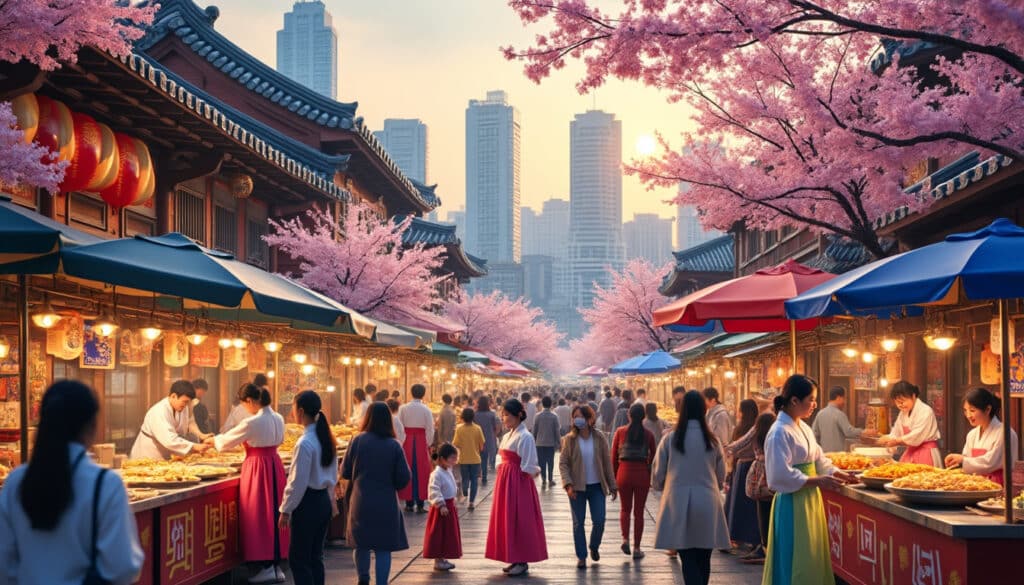
Seoul, an exhilarating blend of antiquity and innovation, is where skyscrapers and palaces coexist against the backdrop of vibrant street life. For newcomers and repeat visitors alike, the city offers a kaleidoscope of experiences that range from the rhythmic pulse…
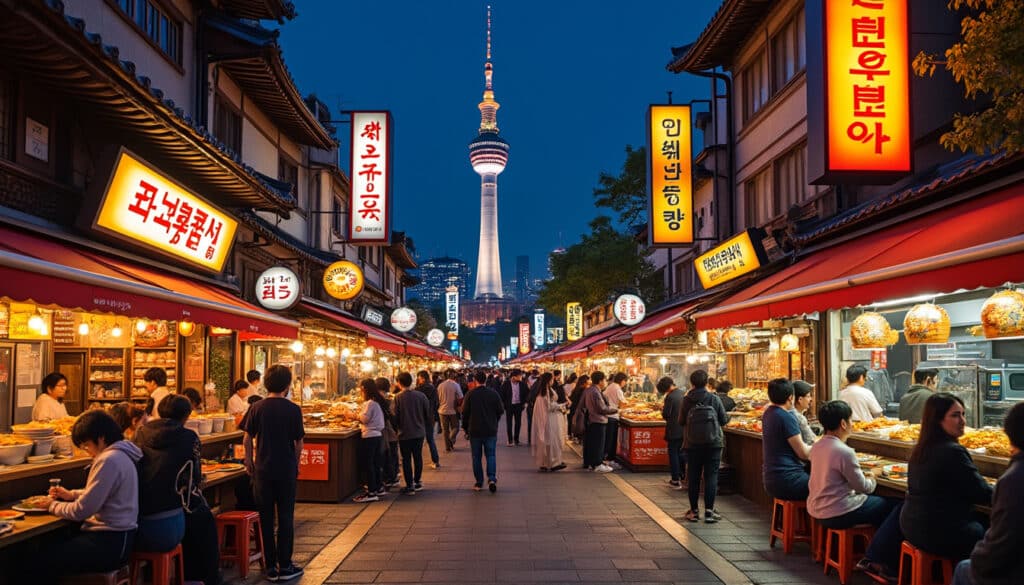
The culinary scene in Seoul is a thrilling journey that captivates both the locals and visitors yearning for genuine flavors and immersive experiences. As a city that perfectly juxtaposes tradition with avant-garde culinary innovation, Seoul boasts a vibrant food culture…
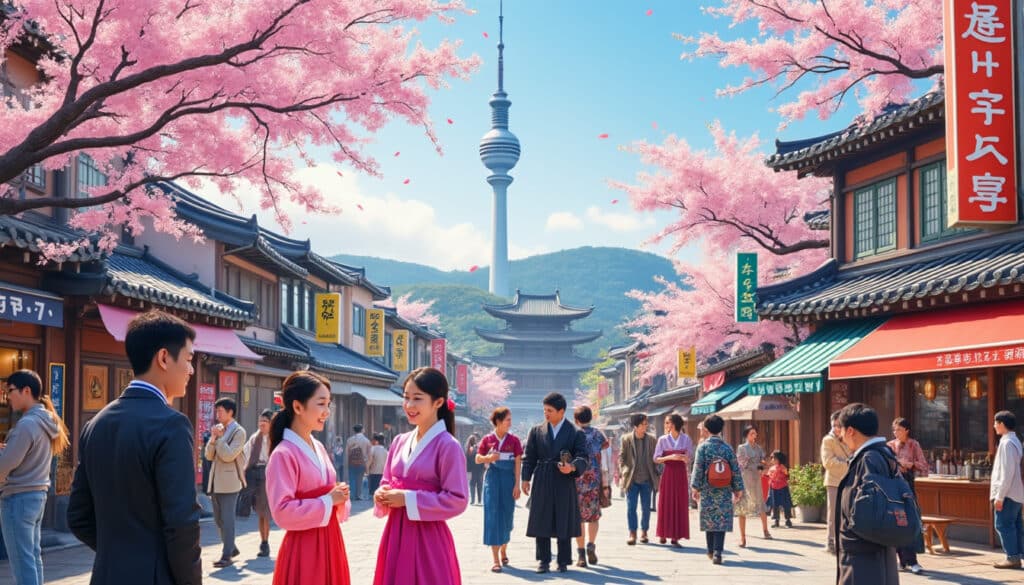
Seoul, the bustling heart of South Korea, is a city where traditional culture meets modernity in a seamless blend. It’s a place where ancient palaces stand tall among high-tech skyscrapers. More than just a geographical focal point, Seoul is a…
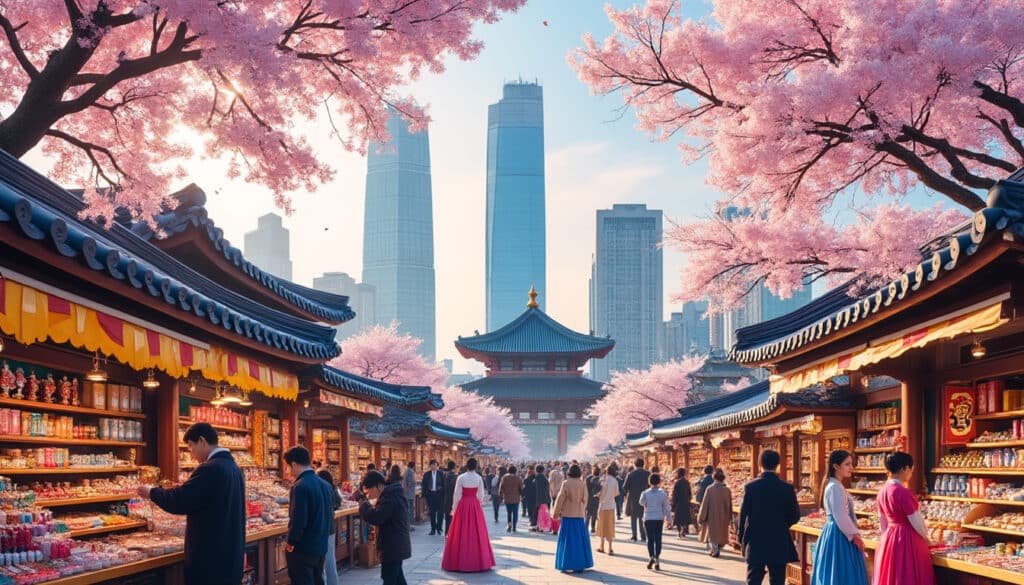
Souvenirs and shopping in Seoul
Seoul, a city where tradition melds seamlessly with modernity, offers a shopping experience like no other. This vibrant metropolis teems with life, culture, and an abundance of unique products that cater to the tastes of both its residents and its…

